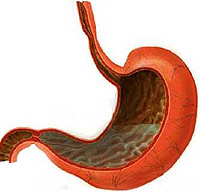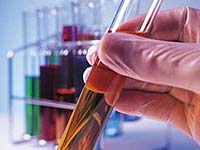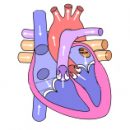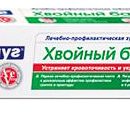Gallgamed disease (LCB) refers to the number of widespread diseases. Ball-name disease may be asymptomatic (t.N. Latent form of HCB), but there is always a threat of a sudden severe complication of the pathological process, so it is so important to detect the HCR in time.
Content
Diagnostics
Gallgamed disease (LCB) refers to the number of widespread diseases. In surgical hospitals among patients with chronic diseases of the abdominal cavity, patients with HCRs occupy the first place. In the postwar period in economically developed countries of Europe and North America, the number of patients with HCB has increased significantly. This is evidenced by the number of operations performed by surgeons – For example, more than 500,000 cholecystectomium are held annually in the United States. In our country, the high incidence of HCB is also noted, and in each subsequent decade, the number of patients double. This disease rightly consider “There is a disease of the century” and “Welfare disease”, Bearing in mind the immediate connection of its development with the nature of nutrition.
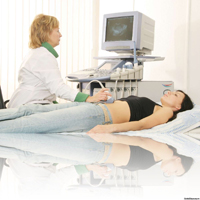 In the past three decades, significant successes have been achieved in resolving the issues of diagnosis and treatment of HCB, in many ways due to progress in the development of medical equipment and fundamental sciences. Thanks to these achievements in medical practice, effective diagnostic methods appeared: ultrasound examination (ultrasound), computed tomography, magnetic nuclear tomography, direct methods of contrasting the biliary tract. Along with this, such research methods such as oral cholecystography and intravenous chopper did not lose their importance. To traditional treatment with the help of open cholecystectomy, methods of laparoscopic intervention and small-scale operations from a minidostype were added. Moreover, non-orpeable treatment methods appeared at the disposal of doctors: drug dissolution and extracorporeal crushing stones. A wide range of diagnostic and therapeutic methods has led to the revision of the strategy and tactics at the Board. Naturally, it was necessary to optimize the selection of diagnostic research and the treatment method individually for each pace.
In the past three decades, significant successes have been achieved in resolving the issues of diagnosis and treatment of HCB, in many ways due to progress in the development of medical equipment and fundamental sciences. Thanks to these achievements in medical practice, effective diagnostic methods appeared: ultrasound examination (ultrasound), computed tomography, magnetic nuclear tomography, direct methods of contrasting the biliary tract. Along with this, such research methods such as oral cholecystography and intravenous chopper did not lose their importance. To traditional treatment with the help of open cholecystectomy, methods of laparoscopic intervention and small-scale operations from a minidostype were added. Moreover, non-orpeable treatment methods appeared at the disposal of doctors: drug dissolution and extracorporeal crushing stones. A wide range of diagnostic and therapeutic methods has led to the revision of the strategy and tactics at the Board. Naturally, it was necessary to optimize the selection of diagnostic research and the treatment method individually for each pace.
The need to delivering a patient from the HCRs is dictated not only by the emerging biliary bilges, but also the danger of severe complications (acute cholecystitis, mechanical jaundice, destructive pancreatitis, etc.), which may require urgent surgery, and with a long-term course of the underlying disease, the development of gallbladder cancer. Therefore, treatment should be subject to both patients with symptomatic HCB, and with a latency-leaking form, in which there is always a threat of a sudden severe complication of the pathological process. The recommendation of the patient of a certain treatment method should be based on the assessment of its physical condition, the nature of the disease, related changes in the bile ducts (stones, strictures). The information you need can be obtained using a number of instrumental and laboratory research.
Ultrasound procedure
Main method for diagnosing boards. Ultrasound allows you to determine: the presence of stones in the bustling bubble, their quantity and size, total volume and, which is important, the qualitative composition of the concrections; The location, dimensions and shape of the gallbladder, the thickness of its wall and the presence of a narrowings in it, the degree of inflammatory-infiltrative changes; The diameter of the hepatic brass and the presence of stones in it. A variant of the functional ultrasound using a choleretic breakfast allows you to evaluate the contractile and evacuator function of the gallbladder.
Oral cholecystyography
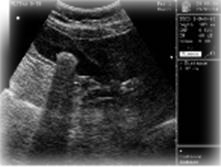 X-ray-contrast research method of the gallbladder, based on oral intake of iodine-containing drugs. Its use is appropriate in cases where it is necessary to have accurate data on the functional state of the gallbladder, the X-ray transmission of the concrections and the degree of their calcification. This information is extremely important for the selection of patients with litholithic therapy and extracorporeal lithotripsy (ECLT). One of the disadvantages of the method is the impossibility of contrasting bile ducts, the status of which you need to know in all cases without exception when the patient prescribes treatment.
X-ray-contrast research method of the gallbladder, based on oral intake of iodine-containing drugs. Its use is appropriate in cases where it is necessary to have accurate data on the functional state of the gallbladder, the X-ray transmission of the concrections and the degree of their calcification. This information is extremely important for the selection of patients with litholithic therapy and extracorporeal lithotripsy (ECLT). One of the disadvantages of the method is the impossibility of contrasting bile ducts, the status of which you need to know in all cases without exception when the patient prescribes treatment.
Intravenous chopper
Based on intravenous administration of a contrast solution, the method makes it possible to obtain a clear image of not only the gallbladder, but also of extrahepatic bile ducts. This circumstance is extremely important for the detection of stones in bile ducts, determining the degree of their expansion or narrowing. Detection on cholangiograms of even moderate expansion of bile ducts is an indirect sign of a disorder of bile in the intestines, and in this case additional research is necessary to identify the cause of bile hypertension. Conducting intravenous chopper is absolutely shown in cases where suspicion arises for the accompanying defeat of bile ducts. The presence of stones and strictures in them. To remove these suspicions, you can resort to the use of endoscopic retrograde cholangiopancopyography (ERCP). But compared to this diagnostic method, intravenous chopper is a gentle and less dangerous method that is not characteristic of life-threatening complications.
Hepatobiloscintigraphy
Refers to the number of radioisotope research methods with registration with the help of a gamma chamber of the radiopharmaceutical movement through liver cells and the gallways. Normal indicators of the highlighting speed of the radiopharmaceutical of the liver cells, its movement and evacuation from bile ducts reliably indicate the absence of a disorder of bile in the intestines. When slowing down the speed of the radiopharmamp preparation on the extrahepatic bulls and the delay of its release into the lumen of the duodenum, it is necessary to suspect the presence of consolidation or strictures in them. To resolve these doubts, X-ray-sensitive studies (intravenous chopper, ERCP or intraoperative chopper) are required. The method of hepatobiloscintigraphy (GBSG) allows you to evaluate the functional state of the gallbladder and hepatic cells, which is especially important when suspected of a patient of chronic hepatitis. Small invasiveness, high manufacturability and informativeness are the basis for the use of GBSG in all cases of uncomplicated HCR, when the question of the prescription of the patient of the non-efficient or operational method of treatment is positively resolved. Normal indicators of the functional state of bile ducts according to the GBSG data allow you to select patients with insulated cholecystectomy and do not resort to X-ray-sensitive studies both before operations and during it.
Blood biochemical study
It is necessary to estimate the functional state of the liver and the characteristics of lipid metabolism. In biochemical analysis determine the level of bilirubin (direct and indirect fraction), alanine and aspartaminotransferase, alkaline phosphatase, cholesterol and triglycerides. The normal indicators of the level of bilirubin and the activity of the main liver enzymes indicate the absence of an active inflammatory process in hepatocytes. The detected high level of plasma cholesterol and triglycerides indicates the relationship of the disease with a violation of lipid metabolism. This fact should be made of much importance, since patients with hypercholesterolemia besides the proposed basis treatment, it is necessary to carry out hypocholesterolemic therapy, aimed at preventing recurrence of stone formation.




